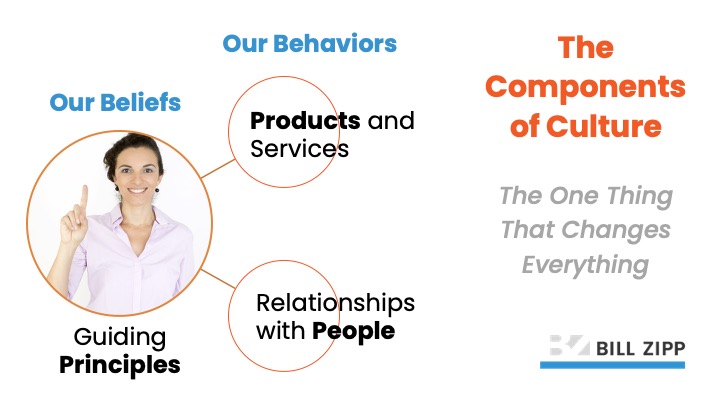I love Kmart. But not for the low, low prices or the blue light specials. I love Kmart because wherever I travel in the United States, I can find a dead plant there.
Let me explain…
As a speaker, I’m often asked to address the topic of organizational culture. I begin my speech by putting a dead plant in front of the audience and asking the group what this plant needs. We generate a list—water, air, nutrients, re-planting, pruning—and discuss the ways in which this list parallels the corporate context.
There’s one problem with that ingenious idea, however. Where do you find a dead plant on demand? The solution: Kmart. They’ve never failed to deliver. There’s always a good supply of dead plants on their shelves from which to choose.
When I take my dead plant to the check-out line to pay for it, I ask the attendant if he or she could discount it for me because the plant is, obviously, quite dead. A conversation like this ensues:
“I’m sorry, sir. I’m not allowed to do that.”
“But the plant is dead,” I reply.
“It’s not our policy to discount dead plants. Then everyone would want them.”
“And that would be a problem?“
I’ve learned a lot over the years from dead plants about what it takes to build great organizational culture, but first, allow me to answer these two questions: What is culture and why does it matter?
What is Culture? Why Does It Matter?
Simply stated, culture is the combination of beliefs and behaviors any group of people embrace, from businesses to churches, families to nations. It’s the way people in these groups think and the way they act over time.
If a sports team believes it cannot win close games, its behavior reflects that belief when minutes turn to seconds on the clock. They stop playing with a sense of urgency and give up. In business, culture drives how we participate in meetings, how we treat our customers, and how we go about pursuing our goals and responding to the obstacles that arise related to them.
Culture is the undercurrent of all that goes on in your organization and the riptide that drowns any initiative that drifts into its flow. It’s the one thing that changes everything. Which makes building great organizational culture one of your top priorities as a leader.
The stark reality is this: you may have the best product at the best price. You may have the most brilliant strategy being executed by the most talented staff. You may have the latest cutting edge technology and the slickest social media presence, but if your culture is broken, all of that stuff—every bit of it—is dead on arrival.
Or in the words of Peter Drucker, “Culture eats strategy for breakfast!”
Three P’s of Culture
Okay, here’s what I’ve learned about culture: Great organizational culture has three intersecting lines. The first of these lines is your company’s guiding principles, its core values. That line then intersects with the products and services you provide and the way you treat people. Let’s address each in turn.
1. Guiding Principles
The starting place for culture is with beliefs. That is, a common set of characteristics a company is committed to carrying out, no matter what. You may refer to these as core values, or, as I do here, as guiding principles.
Companies with great organizational culture have intentionally identified a handful of these qualities and defined them as a group. Often, this process begins with individuals in the organization identifying their own core values, explaining them to each other, and affirming the shared commitments that surface in the process.
Don’t, however, jump into this process lightly. It isn’t for the faint of heart.
“Coming up with strong values—and sticking to them—requires real guts. Indeed, an organization considering a values initiative must first come to terms with the fact that, when properly practiced, values inflict pain and demand constant vigilance,” warns the ever-insightful Patrick Lencioni in Harvard Business Review. “If you’re not willing to accept the pain real values incur, don’t bother going to the trouble of formulating a values statement. You’ll be better off without one.”
2. Products and Services
If you’ve ever participated in a core values exercise like the one described above (It was all the rage a few years ago.), your company may have assembled a list like this: communication, respect, integrity, excellence.
Don’t those words sound great?
Here’s the problem with the items on that list. They were the core values of Enron as stated in its annual report shortly before the company’s epic meltdown, one of the worst scandals ever to have rocked the business world. Ouch!
The challenge, then, in building culture is not coming up with the ideals we espouse but actually embodying those ideals in the demands of day-to-day life. Doing them /no matter what/.
This means having your guiding principles drive the quality of the products you bring to market and the integrity of the services that support those products. It may mean declining to offer certain services because they don’t align with your values or refusing to provide certain products, regardless of their profit margin.
In other words, the creation of a company culture that’s consistent with its convictions requires that your values inform every marketplace interaction—from advertising to sales, from accounting to operations—or they are, like Enron, empty words on the wall (or in a glossy annual report).
3. Relationships with People
Culture begins by what we say we believe, our guiding principles, and it continues by acting on those beliefs with specific, repeated behaviors. First with our products and services, and next in our relationships with people.
Token phrases, such as, “People are our greatest asset,” cause instant eye-rolls and cynical skepticism. Not, however, within companies with great organizational culture. These firms have allowed their values to inform daily interactions with their employees, creating an environment of mutual trust and respect.
Granted, working with human beings is infinitely more difficult than bringing products and services to the market, but this is where culture becomes deeply embedded in a company. And while volumes have been written on the subject, I offer some simple advice. Be honest. Be human. Be both at the same time.
Being honest involves speaking with clarity and candor and avoiding the deceptive guise of minimization or exaggerated overstatements. Honesty without humanity, however, can be harsh and hurtful. So along with clarity and candor, provide kindness and compassion. In other words, be human. And while you’re at it, be humble.
For my faith friends, you’ll recognize this concept as becoming more like our Savior, who is ”full of grace and truth.” Again, not one or the other but both completely. A fullness of grace and truth has the potential to create the greatest culture your company has ever experienced.
If your organization were a plant, how healthy would that plant be? Would it be dying on a shelf at Kmart or thriving in a fertile garden?
The choice is yours as a leader. It’s a choice to pay attention to the one thing that changes everything, empowering your people to stay true to their guiding principles with all your products and services and all your relational interactions.


